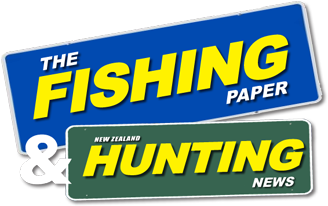Book Reviews » Great Walks of New Zealand Maps
Great Walks of New Zealand Maps
Craig Potton Publishing
Reviewed by Imo McCarthy
$24.99 each
Craig Potton Publishers and Roger Smith of Geografix have produced maps of the nine Great Walks of New Zealand.
These maps give the impression of aerial photographs yet are uncluttered allowing the tracks, significant features and huts to stand out. The maps have two sides, one showing the Great Walk and the other showing a much wider view, often of the National Park surrounding the walk.
The 3D look gives a good feel for the ups and downs you will experience on the tracks and there is also a cross section showing the peaks and saddles and the kilometres travelled. The vertical exaggeration on the cross section for the Abel Tasman Track could make some people think they are striding over mountains!
I looked very carefully at the Abel Tasman Track map, as this is the area I am most familiar with. I was pleased to find that the times given were moderate and attainable and the low tide crossings and bridges were clearly marked. Private land and the Perrine Moncrieff Scenic Reserve are identified. The map gives essential information about campsites as well as huts and gives reference to the DOC contacts for booking and updates.
On this side of the map you can also see other tracks in Abel Tasman National Park. There is no detail about times or hut size for this area, but this information can be accessed from the internet.
The other side of the map shows a much larger area and includes much of Kahurangi National Park. Huts and tracks are clearly marked. Only half of the Wangapeka track is shown – enough to raise your interest perhaps but then this is a Great Walks map. The map on this side extends from Farewell Spit in the north down to the St Arnaud Range in the South.
I also examined the Tongariro Circuit map. This map shows the circuit in the top half of the map and the round the mountain track in the bottom half. I think it could possibly have shown more detail of the Circuit and less of the round the mountain track as that is also clearly shown on the Tongariro National Park map on the other side.
The maps are made of a material called Rockstock, a tree free paper substitute. It is made from waste from the building industry. Offcuts, waste, stone rock, marble and tiles are ground to recover Calcium Carbonate, which makes up about 80% of the paper; the rest is a non-toxic resin. It fells like a type of plastic but is more environmentally friendly.
I tested for waterproofness and yes, while wetting the surface the water did not soak in. I tried to tear the edge and it only stretched a bit so they are tough enough. Moths and other insects don’t eat it so I guess if you put it away in a drawer for several years between trips, the silver fish will leave it alone. They say it is photodegradable which means that if you leave it out in the sun for months it will get brittle and break down.
I love maps, they hold my dreams and sometimes my achievements and experiences. These are very appealing. They are attractive to look at, serviceable, giving reliable information and strong enough to be taken in and out of your pack in all weathers. The map’s two sides give many other options. Altogether, a good purchase.

